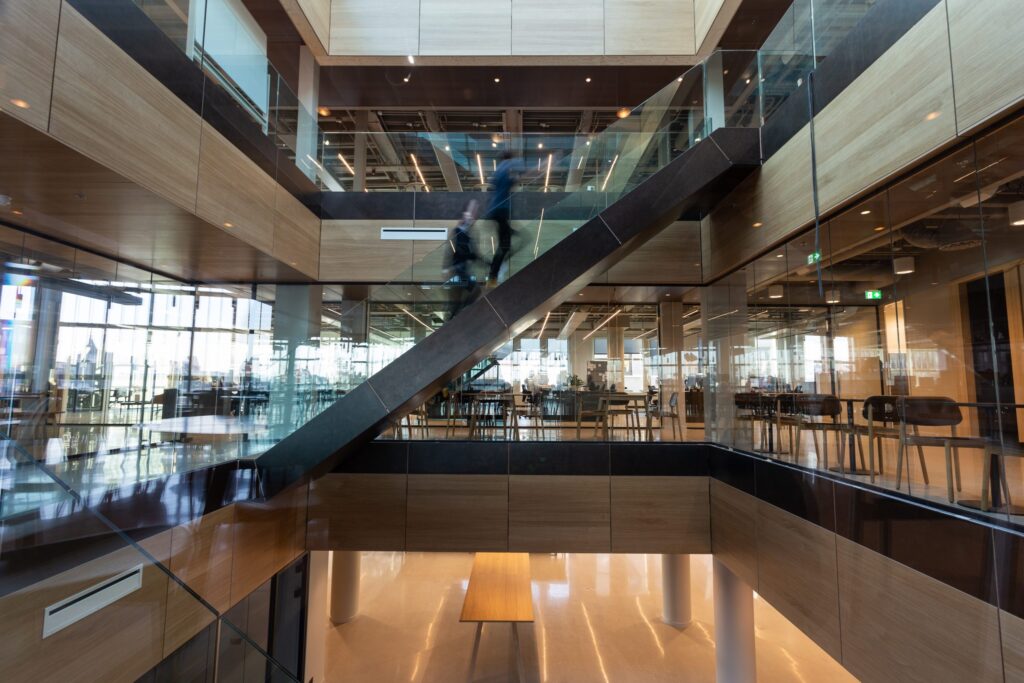5 Benefits of Digital Technologies in Facility Management in a Post COVID-19 Era

The COVID-19 pandemic has brought unprecedented attention to facility management and the workspace, and has compelled facility managers to look for new ways and technologies to meet the challenges and opportunities brought by the pandemic.
Many facility managers agree that creating a safe work environment for employees and facility cleanliness is the biggest challenge and opportunity in the post pandemic era. Facility managers are also facing challenges that range from reconfiguring the entire workplace, to minor adjustments for specific workspaces, to creating effective remote working systems.
To tackle these and many other challenges brought by COVID-19, some leading organizations are managing their facility with the introduction of innovative digital technologies. Technologies like the Internet of Things (IoT) are being used to provide insights such as when and how the space is used. Sensor technology is being used to monitor the indoor environment like light, temperature, air pressure, CO2, and humidity to ensure employees have the best work environment. At the same time, technology like asset management systems are being used to ensure safety standards of the assets are maintained by regularly checking and maintaining the health and status of the assets.
According to research by Mitie, almost half of facilities managers are missing out on the benefits of digital technology. Only 7% of facilities managers say they are constantly seeking to identify, trial, and implement new technology solutions to stay ahead of the curve.
Digitization in facilities management involves the use of integrated digital systems to automate facilities management functions such as space planning, predictive maintenance, and energy management. The use of innovative digital technologies and tools in facility management can bring various benefits which we will discuss in this blog.
Asset Maintenance
As businesses are slowly coming back to offices on a full scale, facility leaders must ensure their buildings and assets are safe and secure for the occupants. It is important to use digital technologies like maintenance management systems to automate or manage maintenance tasks to ensure that there are no business disruption or impact to employees and customers due to lack of maintenance.
Most of the maintenance work can be planned earlier and made more efficient through digital technology. From simple tasks such as work scheduling to more complex requirements like predictive maintenance of key machinery such as air conditioning, digital technologies such as sensors provide faster workflows and increased transparency. Most importantly, such technologies can collect and analyze data that can track performance and efficiency, which can be hugely beneficial for maintenance.
Space Booking & Management
A lot of organizations are allowing employees or customers to come into the facility only in batches. In this scenario, having a digital solution like space management systems will help.
You can track how many employees or customers are coming to your facility in a given time, helping you manage the space efficiently. For example, asset and space booking systems like EZBook can track data in real-time and help you see which part of the building is occupied. More advanced space management solutions can even turn up or down HVAC in unused parts of the building.
Energy and Sustainability
To ensure safe, healthy building environments in a post COVID world, organizations such as Deloitte recommend applying smart building technology to reduce and better manage occupant density and improve air quality while maintaining occupancy privacy and system security.
With smart building technology, facility managers can detect complex energy usage patterns and adapt energy usage precisely for specific occupants. Digital technology can also use predictive analysis to ensure environments are comfortable ( for instance heating and cooling) as people arrive in them.
Better Working Environment
With an increased focus on health and safety in a post-COVID workplace, digital technologies like smart buildings can help ensure the workplace and building environment is up to par. Smart offices use automated processes to enhance buildings operations, from air conditioning and heating to lighting and security.
For example, the use of sensors means workers will be able to know where in the office is currently best for ‘quiet’ work, or when to avoid peak lift traffic, and so on. Implementing digital technology can support a company’s environmental, sustainability, health, and wellness objectives while also offering a better overall experience for the workforce.
Decision Making
Digital technologies such as the Internet of Things (IoT), predictive analysis, and big data are immensely shaping how facility managers take decisions. Facility managers can get meaningful insights from a myriad of information collected from various sensors. These data sets can be analyzed, providing key takeaways that could facilitate real-time decision-making.
Technology such as wireless smart sensors can act as the eyes and ears of the building, boosting efficiencies in facility management operations. For example, smart toilet systems can track how heavily the toilets are used. Movement sensors can let cleaners know which parts of office space are more heavily used and therefore require more attention, or ascertain safe levels of occupant numbers.
In the post-COVID-19 world, there would be an increased focus on the role of facility managers to facilitate employees’ return to their workplace and maintain their health and wellbeing. Thus, facility managers should create a strategy focusing on the employees and a healthy workplace and can be achieved by embracing digital technologies.
We provide Digital Transformation solutions from consulting to implementation. Our team can help your organization with assessing your requirements and creating a meaningful roadmap to evolve your business through digital transformation. Contact us for a consultation and to learn more on how we can help.
https://ezbook.com/office-parking-spot-booking-system/
https://ezbook.com/resource-booking-software-and-it-benefit/
https://ezbook.com/what-is-space-booking-system/
Bhuwan has over 25 years of experience as a management consultant, senior management, and as an entrepreneur. He is known for his problem-solving skills and ability to launch and grow businesses. He has developed business and marketing strategies and executed them successfully.